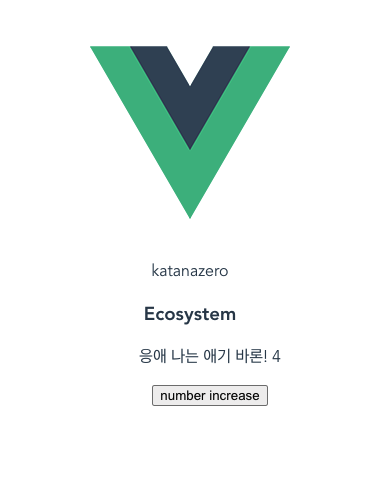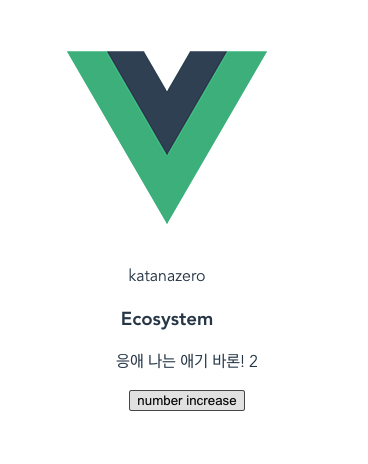
안녕하세요? 오랜만에, 또 포스팅을 합니다!
오늘은 알아두면 좋은 Vue.js 코딩 패턴에 대해서 소개를 드리도록 하겠습니다!
pattern : 되풀이 되는 사건, 되풀이 되는 형태 또는 문양
IT 에서 의미하는 패턴은 상황에 따라 자주 쓰이는 코딩 방식이라고 이해하시면 됩니다!
- AsyncComponent (Vue.js 2.3+)
Vue.js 2.3 의 새로운 기능으로, 비동기 컴포넌트를 아래와 같은 형식으로 정의가 가능합니다.
const AsyncComponent = () => ({
// The component to load (should be a Promise)
component: import('./MyComponent.vue'),
// A component to use while the async component is loading
loading: LoadingComponent,
// A component to use if the load fails
error: ErrorComponent,
// Delay before showing the loading component. Default: 200ms.
delay: 200,
// The error component will be displayed if a timeout is
// provided and exceeded. Default: Infinity.
timeout: 3000
});3.x 구문은 아래와 같습니다.
import { defineAsyncComponent } from 'vue'
import ErrorComponent from './components/ErrorComponent.vue'
import LoadingComponent from './components/LoadingComponent.vue'
// Async component without options
const asyncModal = defineAsyncComponent(() => import('./Modal.vue'));
// Async component with options
const asyncModalWithOptions = defineAsyncComponent({
loader: () => import('./Modal.vue'),
delay: 200,
timeout: 3000,
errorComponent: ErrorComponent,
loadingComponent: LoadingComponent
});비동기적으로 컴포넌트를 불러와 사용이 가능합니다.
Vue-Router 에서 지연로딩(lazy-loading)과 유사한 매커니즘입니다. Vue-Router 로 경로(path)와 컴포넌트를 매칭할때 defineAsyncComponent 를 사용하지 말라고 문서에서 설명해주고 있습니다.
비동기 컴퍼넌트를 쉽게 작성이 가능하며, 이걸 통해서 로딩상태처리도 쉽게 가능합니다.
- v-once 를 활용한 렌더링 캐싱
v-once 지시어는 한번만 렌더링을 하고, 이후에 값을 변경해도 이전에 렌더링한 결과를 유지합니다.
- JSX
Vue.js 도 JSX 방식으로 작성이 가능합니다! 혹시라도 React 를 개발하시다가 넘어오더라도 걱정마세요.
<template>
<div class="hello">
<h1>{{ msg }}</h1>
<p>{{ name }}</p>
<EcoComponent/>
</div>
</template>
<script>
import {defineComponent, ref} from "vue";
const EcoComponent = defineComponent({
name: 'EcoComponent',
setup() {
const number = ref(0);
const handleIncreaseClick = () => {
number.value++;
};
return () => (
<div>
<h3>Ecosystem</h3>
<ul>
<p>응애 나는 애기 바론! {number.value}</p>
<button onClick={handleIncreaseClick}>number increase</button>
</ul>
</div>)
}
});
export default {
name: 'HelloWorld',
components: {EcoComponent},
setup(props) {
const name = ref('katanazero');
return {
msg: props.msg,
name,
}
}
}
</script>
<style scoped>
h3 {
margin: 40px 0 0;
}
ul {
list-style-type: none;
padding: 0;
}
li {
display: inline-block;
margin: 0 10px;
}
a {
color: #42b983;
}
</style>

주의할점은 JSX 구문 시, .value 를 해줘야한다는 점 및 스타일에 대해서 따로 처리를 해줘야 한다.
- composition API 사용시, reactive 관심사 분리하기
export default {
setup() {
// destructure without losing reactivity bc of toRefs
const { search, findString, autoComplete } = configureSearch();
return {
search,
findString,
autoComplete,
};
},
};
// 관심사에 따라 분리
function configureSearch() {
const state = reactive({
search: "",
findString: "",
autoComplete: "",
});
return toRefs(state);
}toRefs 는 리액티브(reactive) 객체를 가져와 ref 로 변환해줍니다.
reactivity(반응성)를 잃지 않고 반환된 값을 destructure/spread 할수 있기 때문에, 컴포지션 함수등에서 유용하게 사용할수 있습니다.
해당 컴퍼넌트내에서 관심사가 같은 상태끼리 분리하기 좋은 코드입니다.

포스팅 잘 보고 있습니다.
어제 부터 Nuxt 3 보고있던중에 최근 Vue 가 어쩐지 React 스러워졌다 했는데 JSX 가능해졌군요 ~
좋은 포스팅 감사드립니다 :)